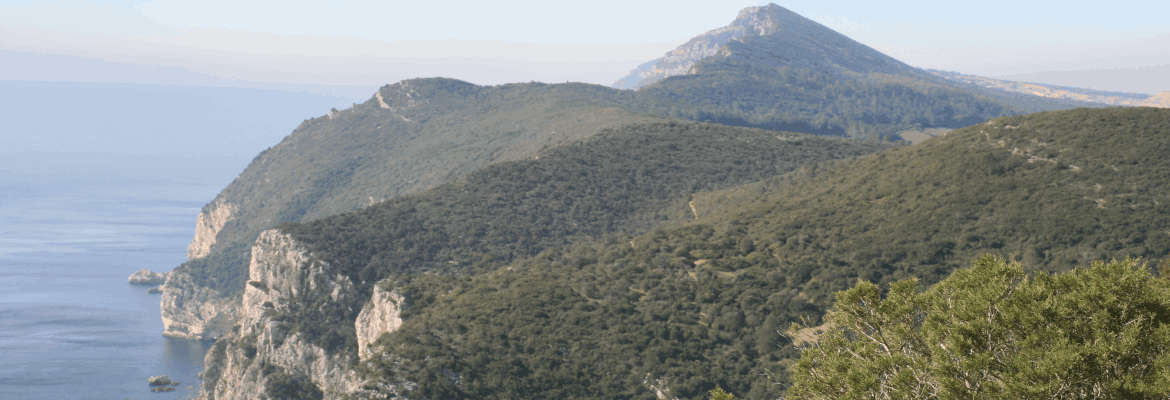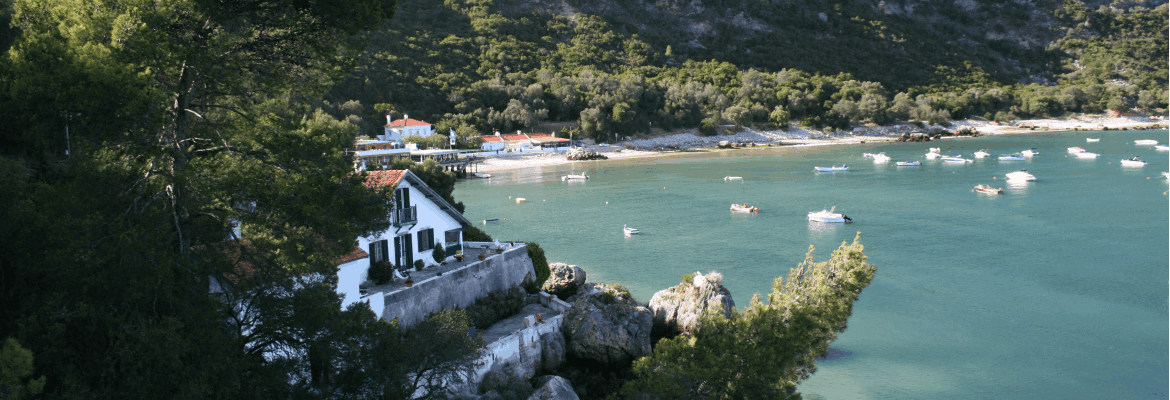Arrábida Natural Park
The Arrábida Natural Park extends over an area of about 16,500 ha, covering not only the Serra da Arrábida pd, but also the entire surrounding area located between the city of Setúbal, Palmela, the sea and Cabo Espichel, as well as as a marine area of about 5,700 ha, where a great part of the biodiversity of the oceanic waters that bathe these parts is concentrated.
The Arrábida mountain range presents, from a botanical point of view, an exceptional scientific interest, as several nuclei of natural vegetation survive in this region that constitute a unique relic in the world, of Mediterranean forest, of recognized importance not only nationally but internationally.
Of greater relevance is also its cultural heritage associated with some traditional economic activities (wines, cheeses, etc.), and the importance of the built heritage existing in the Park, namely religious and military, which reflects its historical importance, is also noteworthy. region in the context of recent centuries.

Palmela

The village of Palmela, with about 17 thousand inhabitants, dominated by its imposing castle of Arab origin, is located on a spur of the Serra da Arrábida, from which it is possible to observe, in 360º, the entire immensity of the surrounding space.
The castle of Palmela, together with the castles of Sesimbra and Alcácer do Sal, formed a military defense line that allowed to control, south of the Tagus, a vast land, sea and river territory, from the Atlantic Ocean to the very interior of the Alentejo plain.
It is a municipality dominated by agricultural activities, of which viticulture (and wine production) stands out, occupying around 70% of the total area of vineyards in the municipalities of the Setúbal wine region.
Grazing and cheese production are also activities of the greatest economic importance, given the quality, prestige and strong presence of Azeitão cheese in the market.
Azeitão

Azeitão is a place of strong historical and aristocratic traditions, having been, above all, from the 15th century onwards, that the nobility here began to build palaces and emblazoned farms, some of which still exist, and which stand out for their magnificence, the palace of the Dukes of Aveiro.
Azeitão was the scene of some of the most significant episodes in the history of Portugal, namely those that led to the extinction of the Casa de Aveiro, in 1759, and the Liberal Revolution of 1834.
In the Azeitão region, viticulture is an activity with a strong expression, being particularly aimed at the production of fortified wines, among which the famous Moscatel de Setúbal stands out.
The name of the most famous sheep’s cheese produced in Portugal is from Azeitão, and the specialties in regional sweets are worth mentioning, including the Azeitão and Esse pies.
Portinho d’Arrábida

Portinho da Arrábida is one of the most emblematic places in the Arrábida Natural Park and in the entire region, making it an obligatory stopping point for those traveling along the magnificent coastline of Arrábida.
Its white sand beach nestled in a small bay between the mountains and the sea, is one of the most beautiful corners of the Portuguese coast, having been considered the most beautiful natural beach in Portugal.
In addition to its spectacularity, this place also has a historical and cultural heritage worth visiting, namely the Roman ruins of Creiro, the Fortress of Stª Maria da Arrábida, an old military fort from the 17th century, where the Oceanographic Museum is located, and the Stª Margarida Grotto, a small example of the karst structure of the Serra da Arrábida.
Sesimbra

Sesimbra has long been a preferred tourist destination, with high environmental and landscape standards, where the port and fishing boats, its beaches, are some of the most characteristic features of this important tourist center where gastronomy is closely linked to its fishing tradition.
Sesimbra, whose landscape is dominated by its imposing castle of Arab origin, was definitively conquered from the Moors in 1200, by King D. Sancho I.
Together with the castles of Palmela and Alcácer do Sal, the castle of Sesimbra was part of a military defense line that allowed the control of a vast land, maritime and river territory south of the Tagus, from the Atlantic Ocean to the interior of the plain. Alentejo.
The village of Sesimbra, with about 24 thousand inhabitants, is today completely surrounded by the Arrábida Natural Park, either by land or by sea, being one of the most characteristic fishing villages in Portugal.
Cabo Espichel

Cabo Espichel is one of the most remarkable places on the Portuguese coast, defining the end of the land area and the beginning of the immensity of the sea.
The landscape is dominated by the Sanctuary of Nª Senhora do Cabo and by the maritime signal light, being a migratory place for thousands of birds in late summer and early autumn.
Due to its very high cliffs, it is a good nesting habitat for some species of birds, namely the Peregrine Falcon.
From a botanical point of view, the presence of two species in this place stands out, the Corriola do Espichel and the Trovisco do Espichel, extremely rare plants that, worldwide, only exist on the limestone outcrops and on the coastal cliffs of Cape Espichel.
In Cabo Espichel, its geological component is also noteworthy, where several sets of dinosaur footprints can be found.
Lagoon Albufeira

Albufeira Lagoon, located by the sea, north of Cape Espichel, is a place of rare beauty where the green of the pine forests and the white sand beaches contrast with the blue of the sea and the lagoon itself.
This is a very important place for birds, especially in its innermost lagoon, Lagoa Pequena, considered an “Important Bird Area” (IBA).
The Little Lagoon is a place where areas of pine forest and a wetland consisting of coastal lagoons and riverine vegetation predominate.
Its ornithological importance throughout the year is great, not only as a nesting place for several species of water birds, but also used by a large number of passerines during the autumnal migratory passage.
Resident species: Camão, coot, mallard, red heron, great tit, kingfisher, nightingales.